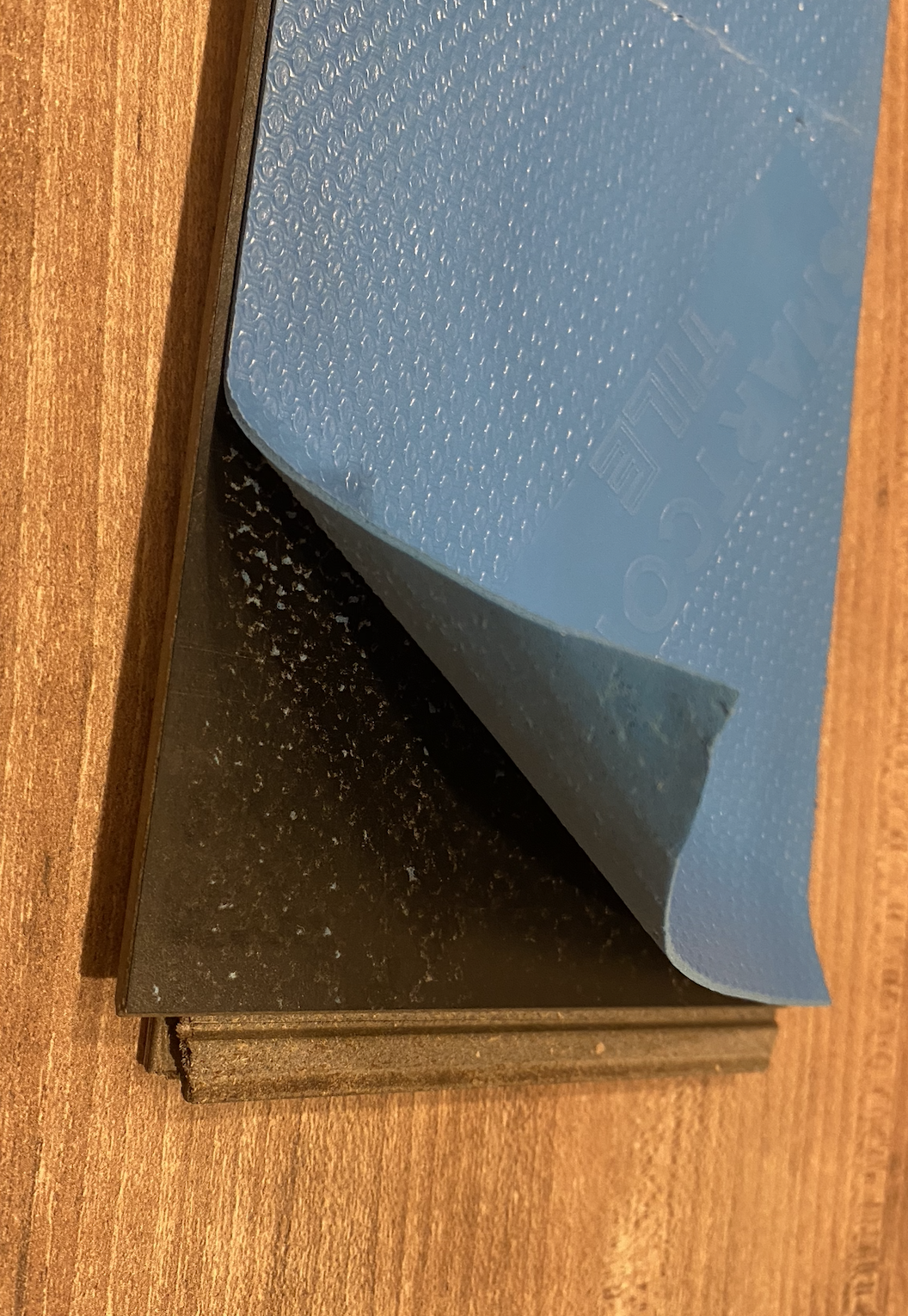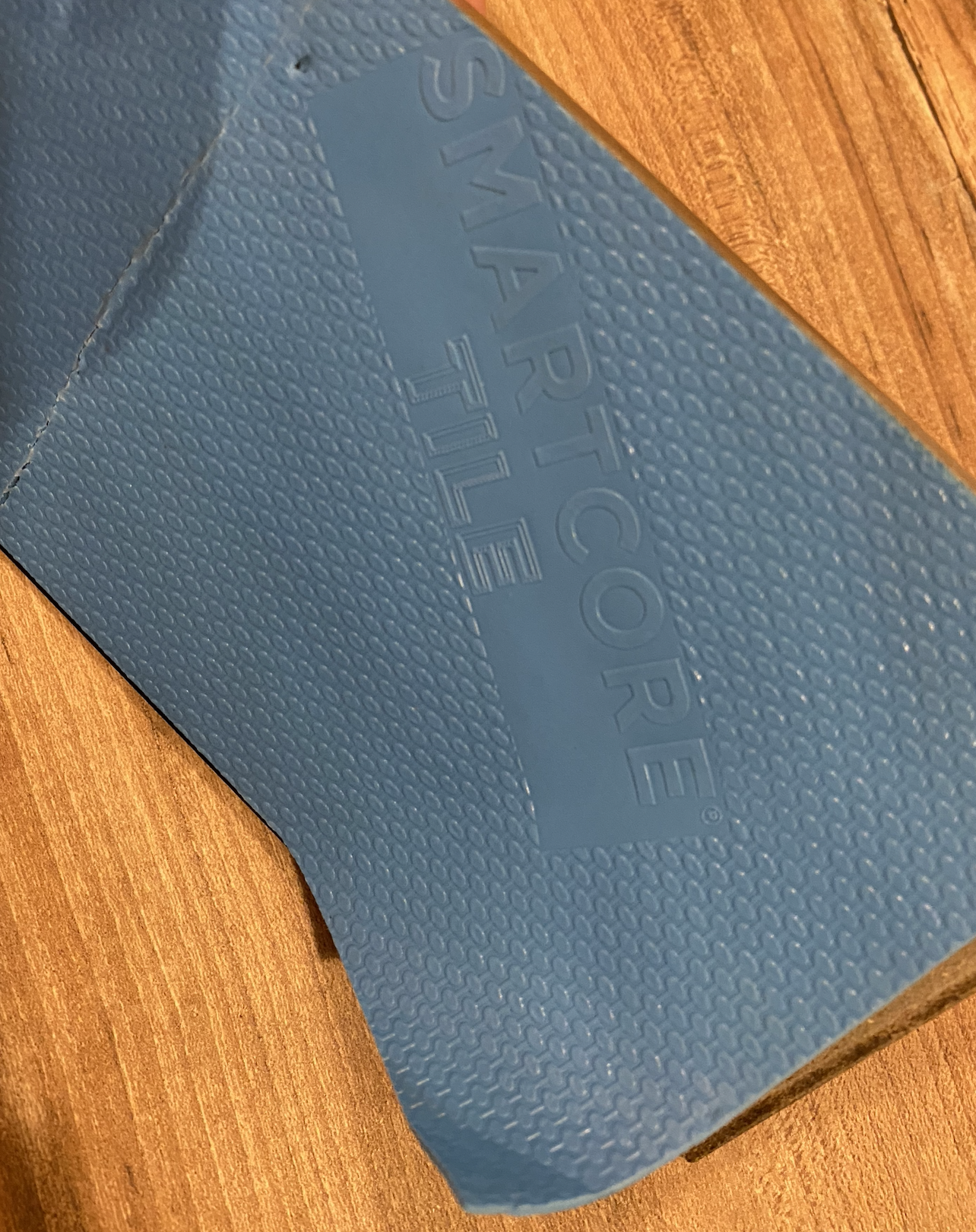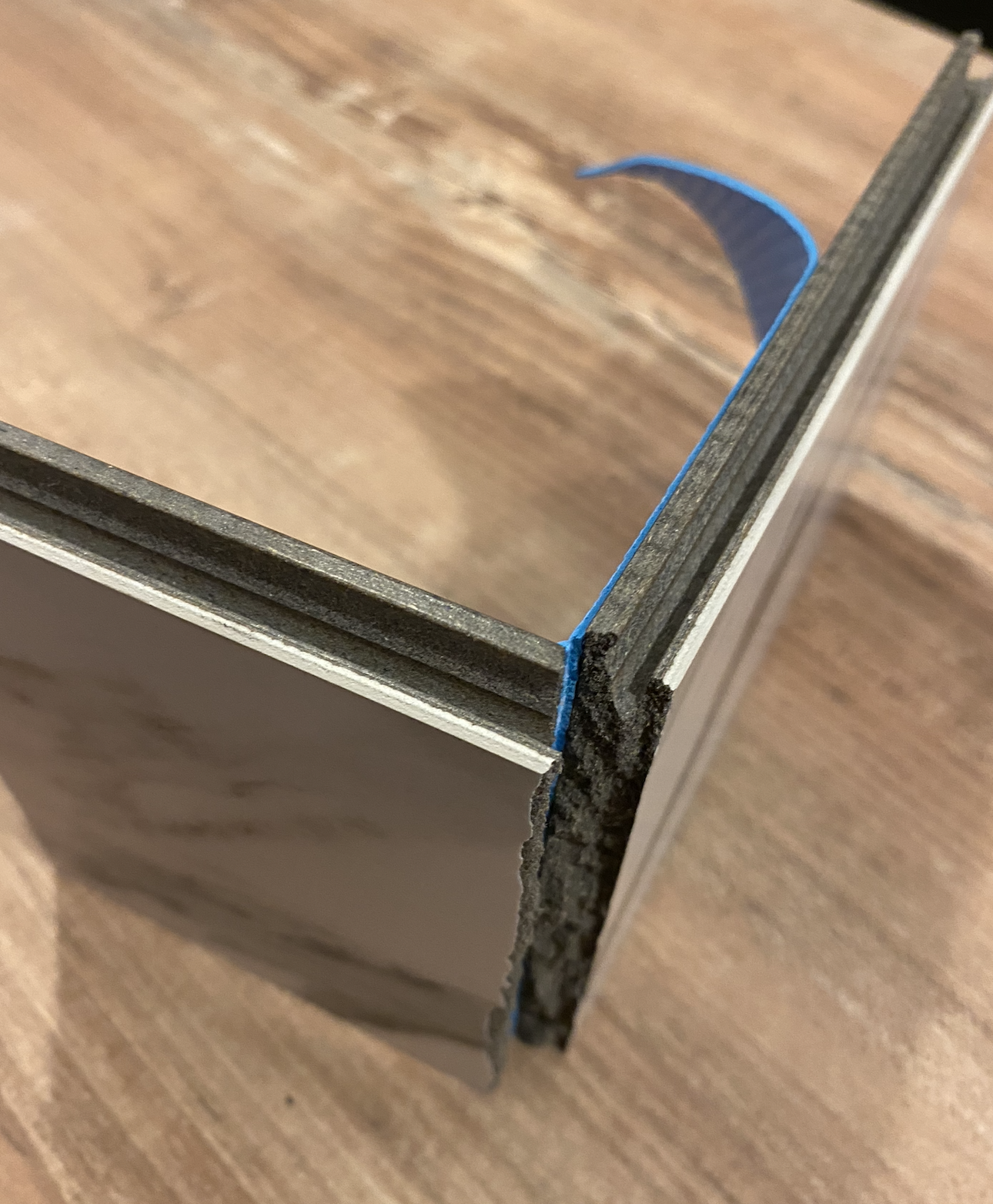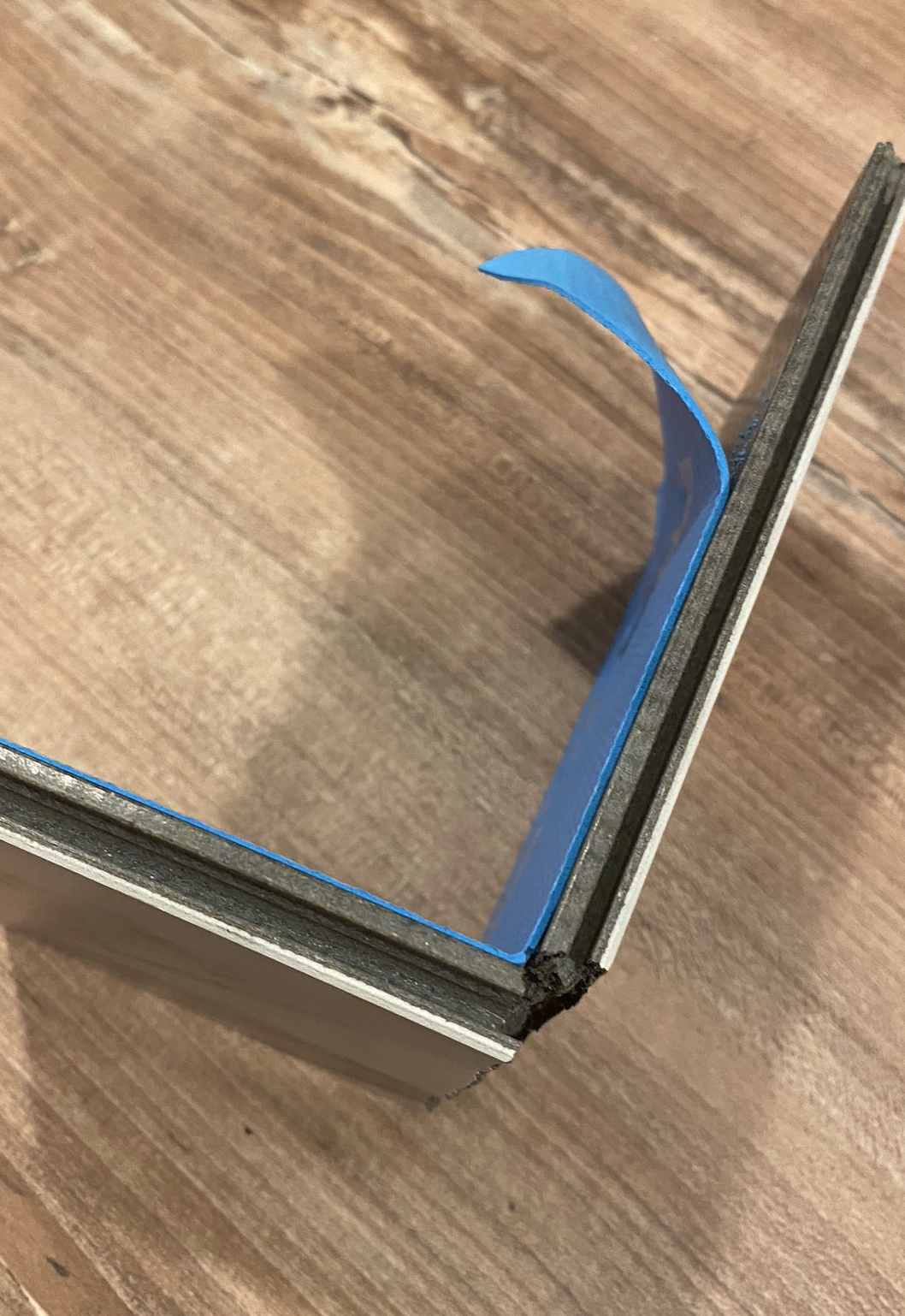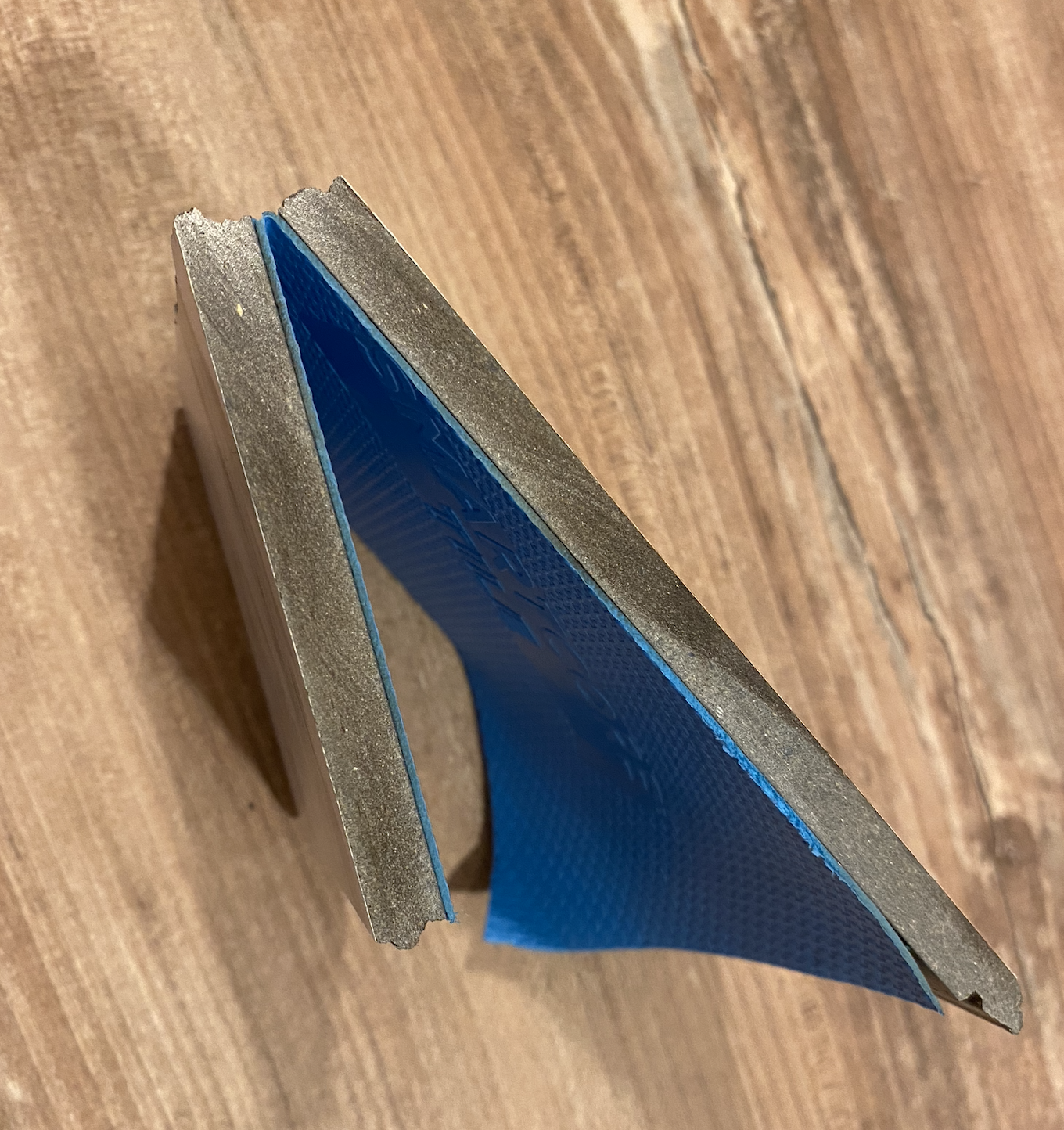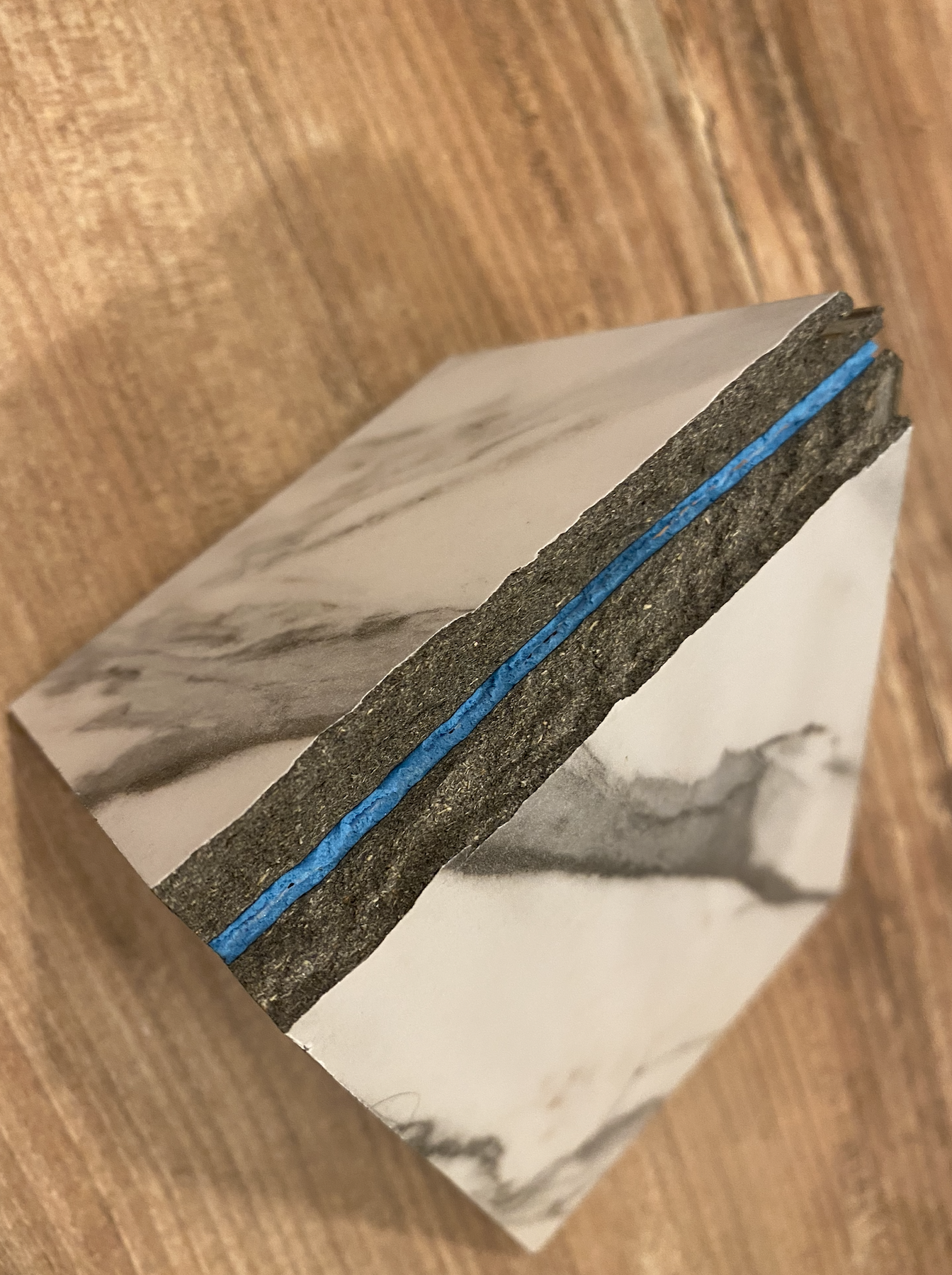Test results for “marble-look” Smartcore Tile pictured
Full XRF Test Results for the Tile Sample Pictured
Metals shown in BLUE are considered non-toxic in this application
Metals shown in RED are generally considered toxic and may or may not have regulatory limits set (in this case there are no regulatory limits for total content of Lead, Cadmium and Antimony in tile.)
Reading #1) surface of tile (faux marble-look surface) – on white area
60-second reading
Note: reading on black area of front of tile had similar readings
- Lead (Pb): non-detect
- Cadmium (Cd): 16 +/- 4 ppm (safe by all standards)
- Tin (Sn): non-detect
- Mercury (Hg): non-detect
- Selenium (Se): non-detect
- Barium (Ba): non-detect
- Chromium (Cr): non-detect
- Antimony (Sb): 19 +/- 9 ppm
- Titanium (Ti): 67,600 +/- 1,700 ppm
- Bromine (Br): 3 +/- 2 ppm
- Niobium (Nb): 462 +/- 16 ppm
- Indium (In): 22 +/- 5 ppm
- Iron (Fe): 468 +/- 82 ppm
- No other metals detected in consumer goods mode.
Reading #2) back of tile with blue “smart core” backing in place
60-second reading
- Lead (Pb): non-detect
- Cadmium (Cd): 19 +/- 4 ppm (safe by all standards)
- Tin (Sn): non-detect
- Mercury (Hg): non-detect
- Selenium (Se): non-detect
- Barium (Ba): non-detect
- Chromium (Cr): non-detect
- Antimony (Sb): 21 +/- 9 ppm
- Copper (Cu): 184 +/- 25 ppm
- Zinc (Zn): 1,161 +/- 46 ppm
- Titanium (Ti): 7,309 +/- 930 ppm
- Niobium (Nb): 507 +/- 17 ppm
- Indium (In): 21 +/- 6 ppm
- Iron (Fe): 885 +/- 101 ppm
- Platinum (Pt): 39 +/- 25 ppm
- No other metals detected in consumer goods mode.
Reading #3) side edge of tile (exposed “ceramic” – seems more like a composite material than typical ceramic)
60-second reading
- Lead (Pb): non-detect
- Cadmium (Cd): non-detect
- Tin (Sn): non-detect
- Mercury (Hg): non-detect
- Selenium (Se): non-detect
- Barium (Ba): 968 +/- 288 ppm
- Arsenic (As): non-detect
- Chromium (Cr): non-detect
- Antimony (Sb): non-detect
- Copper (Cu): 29 +/- 17 ppm
- Zinc (Zn): 270 +/- 20 ppm
- Titanium (Ti): non-detect
- Niobium (Nb): non-detect
- Indium (In): non-detect
- Bromine (Br): 8 +/- 3 ppm
- Iron (Fe): 633 +/- 62 ppm
- Platinum (Pt): non-detect
- No other metals detected in consumer goods mode.
Reading #4) black backing of tile (under blue foam)
60-second reading
- Lead (Pb): non-detect
- Cadmium (Cd): 18 +/- 4 ppm (safe by all standards)
- Tin (Sn): 11 +/- 6 ppm
- Mercury (Hg): non-detect
- Selenium (Se): non-detect
- Barium (Ba): non-detect
- Chromium (Cr): non-detect
- Antimony (Sb): 23 +/- 9 ppm
- Copper (Cu): non-detect
- Zinc (Zn): non-detect
- Titanium (Ti): non-detect
- Bromine (Br): 4 +/- 2 ppm
- Niobium (Nb): 491 +/- 16 ppm
- Indium (In): 25 +/- 5 ppm
- Iron (Fe): 1,553 +/- 118 ppm
- Platinum (Pt): 44 +/- 21 ppm
- No other metals detected in consumer goods mode.
For those new to this website
Tamara Rubin is a Federal-award-winning independent advocate for consumer goods safety and a documentary filmmaker. She is also a mother of Lead-poisoned children. Tamara’s sons were acutely Lead-poisoned in August of 2005. She began testing consumer goods for toxicants in 2009 and was the parent-advocate responsible for finding Lead in the popular fidget spinner toys in 2017. Her work was also responsible for two CPSC product recalls in the summer of 2022, the Jumping Jumperoo recall (June 2022) and the Lead painted NUK baby bottle recall (July 2022) and was featured in an NPR story about Lead in consumer goods in August of 2022. Tamara uses XRF testing (a scientific method used by the U.S. Consumer Product Safety Commission) to test consumer goods for toxicants (specifically heavy metals), including Lead, Cadmium, Mercury, Antimony, and Arsenic. All test results reported on this website are science-based, accurate, and replicable. Items are tested multiple times, to confirm the test results for each component tested and reported on. Please click through to this link to learn more about the testing methodology used for the test results discussed and reported on this website.
Never Miss an Important Article Again!
Join our Email List



